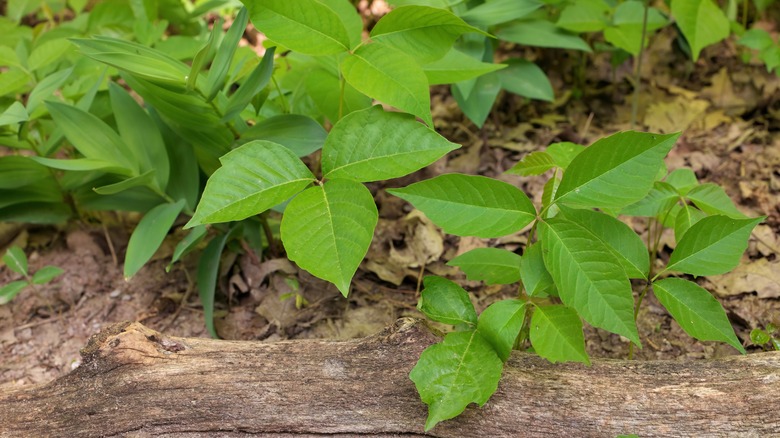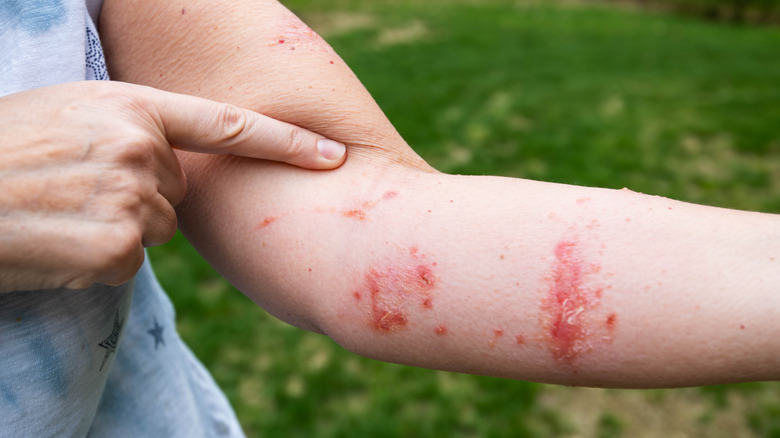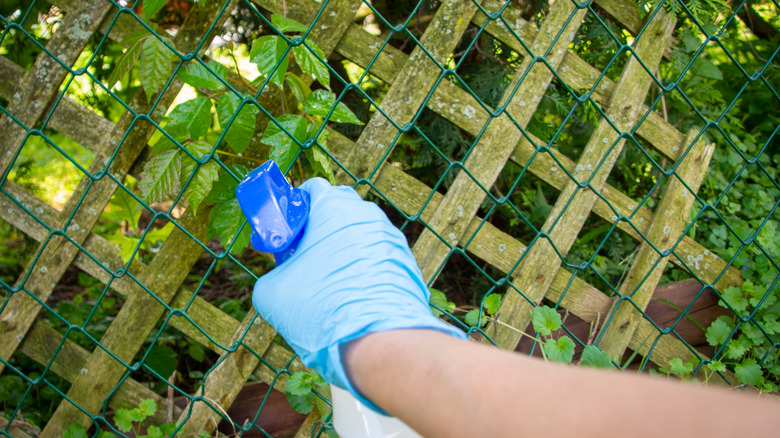This Pesky Weed Might Start Popping Up In Your Yard More And More. Here's Why
As long-term shifts in weather caused by climate change include increased temperatures, changes to plant life are almost certainly going to occur. A recent study from JSTOR focused on how climate change may affect one particular plant, poison ivy, which most people would call a weed. The study determined that poison ivy is one plant that potentially would thrive with increased carbon dioxide in the atmosphere.
According to the study, which occurred over a six-year period at Duke University, elevated carbon dioxide levels are likely to allow poison ivy to grow larger and more potent in terms of causing allergic skin reactions in people who come into contact with it. The study occurred at the Forest-Atmosphere Carbon Transfer and Storage (FACTS-I) facility at Duke, where researchers controlled carbon dioxide levels for plants within the facility.
Through the study, researchers gave the poison ivy plants 1.5 times more carbon dioxide than a control group of these weeds. With the extra carbon dioxide, the plants were able to grow 150% faster than the control plants over the six years. For comparison, it's important to note that the National Oceanic and Atmospheric Association (NOAA) reports the current global concentration of carbon dioxide in the atmosphere at nearly 420 parts per million. The Scripps Institution of Oceanography expects these levels to reach 450 parts per million by 2035, a roughly 7% increase, far lower than the 50% increase the researchers used for the study at Duke.
Why is poison ivy dangerous and where does it grow?
Poison ivy is a dangerous plant because of the allergic reaction that it causes for many people who come into contact with it. Roughly 90% of people who come into contact with this plant will develop a skin reaction, as the oil from the plant transfers onto the skin. Within 24 hours to 72 hours after contact with the skin, you may develop itchy bumps and blisters on the skin. There is no cure for the reaction once it starts, other than using things like calamine lotion to try to tone down the itching sensation.
The biggest danger from exposure to poison ivy occurs from a potential infection. If you scratch the area of the rash repeatedly, you could break the skin. It's possible that bacteria underneath your fingernails could then cause the skin to become infected from the scratching. Should you develop a fever from the exposure or have rashes over a significant portion of the body, you should contact your doctor.
Poison ivy can grow almost anywhere in the United States, other than California, Hawaii, and Alaska, and grows in many parts of Canada. It can appear near walking trails, along fences, and around the perimeter of a backyard, among other highly-frequented areas.
What should I do if poison ivy starts appearing more frequently because of climate change?
How can you protect yourself if poison ivy begins growing larger and more frequent because of increases of carbon dioxide in the atmosphere? The best thing you can do is to avoid having an exposure to this noxious weed. Learning what poison ivy looks like is a good place to start.
It can look like a vine or a shrub, growing low to the ground or climbing onto trees and poles. It has leaves that appear in groups of three, usually with a larger leaf extending upward from the stem and two slightly smaller ones growing on opposite sides of the stem to each other. The leaves often have a teardrop shape, although some types have jagged edges. The leaves change color from shiny green in spring to a deeper green in the summer. They often will turn red or yellow in the fall.
Once you spot it on your property, you'll want to deploy ways to kill and get rid of poison ivy, while also protecting yourself. To kill this noxious weed, you can use a natural or chemical-based weed killer, pour boiling water on it, smother it under a tarp, or even bring in some goats to eat it. If you are discarding dead plants or working around poison ivy, always wear clothing, gloves, and boots to cover the skin.


